Selling & Marketing on Amazon: Getting Started

Amazon has been a big part of eCommerce for years, and recently they have become one of the biggest players in the digital space. Through acquisitions and product expansions, they have cemented themselves as the go-to place to shop. In fact, according to BloomReach, 44% of consumers start their product searches on Amazon and 43% of consumers said the main reason they chose Amazon is the ability to intuitively find or predict exactly what they want.
With Amazon, brands can now more easily reach their target audience and in turn increase sales. In addition, Amazon also makes it easy for brands to advertise their products across the platform’s ecosystem. If you are a brand looking to take the next step, and you are not jumping out of your chair saying, “Okay! Let’s do this, Bezos.”, you should be.
Amazon has expanded and refined their product offering when it comes to selling and marketing on their platform. For sellers, there are two ways to sell your products on Amazon. It’s important to carefully weigh the pros and cons of each option in order to determine which type of business model is best for your brand.
Selling as a 1p
The first way to sell on Amazon is referred to as Vendor Central, also known as 1P or First Party. When brands opt into the 1P model, they sell directly to Amazon. Amazon handles just about everything including pricing, inventory management, order fulfillment and customer service.
Advertising as a 1p
If you opt for the 1P model, Amazon gives you the ability to advertise your products a variety of ways. Amazon Marketing Services, or AMS, is one of the advertising hubs of Amazon and the main ways to market your products., but is reserved only for 1P. Within AMS, you will be able to utilize a few different campaign types, including Sponsored Products Ads, Headline Search Ads, and Product Display Ads. It is important to note that AMS is ONLY reserved for brands that opt into the 1P model.
Selling as a 3p
The second way to sell on Amazon is through Amazon’s Seller Central, also known as 3P or Third Party. The 3P model puts more emphasis on the merchant depending on which 3p program you opt in to (FBA, FBM, SFP). We’ll discuss these options later in the post.
Advertising as a 3p
For 3P advertising, the marketing capabilities are fewer than if you were in the 1P model. 3P sellers utilize Amazon’s Seller Central, not to be confused with Vendor Central, to manage their listings and their marketing efforts. The Seller Central platform only has two of the three tactics that AMS offers to advertisers. Specifically, 3P sellers can only utilize Sponsored Product Ads and Headline Search Ads.
Choosing between the 1P and the 3P model comes down to what best fits your brand. There are strict rules governing sellers on Amazon, which you need to abide by and take into consideration when choosing how you will sell. The 1P model takes a lot of work off of the seller, where the 3P model is more hands on. It is important to consider the following as you determine which model is best for you.
Amazon offers multiple options for listing products. FBA (Fulfilled by Amazon), FBM (Fulfilled by Merchant), and SFP (Seller-Fulfilled Prime). So, which of these options is the best for YOUR business?
There are many factors to consider such as inventory management, customer service abilities, and cash flow. What are the differences between the 3 listing options Amazon offers? I’m glad you asked! Here’s the general difference between the 3 options which are all reserved for 3P sellers.
This is the easiest but most expensive method of listing your products. You create the listing, ship the items to an Amazon fulfillment center and let Amazon handle everything from there. When this happens, you will see the “Fulfilled by Amazon” on the product page, as seen in the screenshot below next to #1. Amazon will deal with Order Handling, Picking and Packing, Shipping, Inventory Management, and Customer Service. You will also be eligible for Amazon Prime with FBA, and you’ll have the best chance of the winning the throne of all thrones… The “Buy Box”, which you can see below next to #2. This is important because if you do not win the Buy Box you may fall into the scenario of #3, where your brand is harder to see on the page.
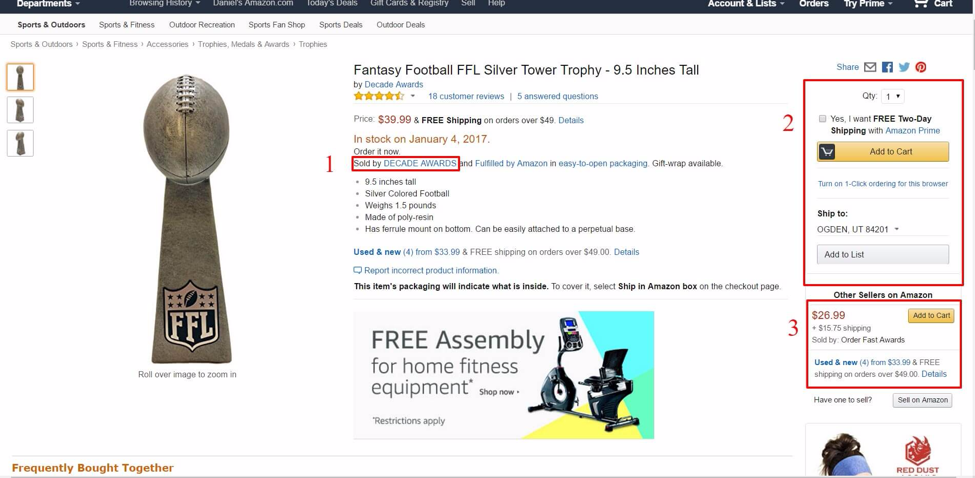
This will provide greater control of your shipping and customer service and you’ll avoid the fees associated with FBA. This means you’ll have to warehouse, pick, pack, & ship, as well as deal with all customer service. Based on Amazon’s terms and conditions, sellers are required to abide by all of Amazon seller rules (i.e. replying to customer support issues within 24 hours, provide tracking info, and ship within your stated time frame). The extra costs associated with FBA might be more cost-efficient than hiring a customer service agent and additional warehouse hands. With FBM you will not have access to Amazon Prime, which in turn will lead to less sales than a comparable FBA offering.
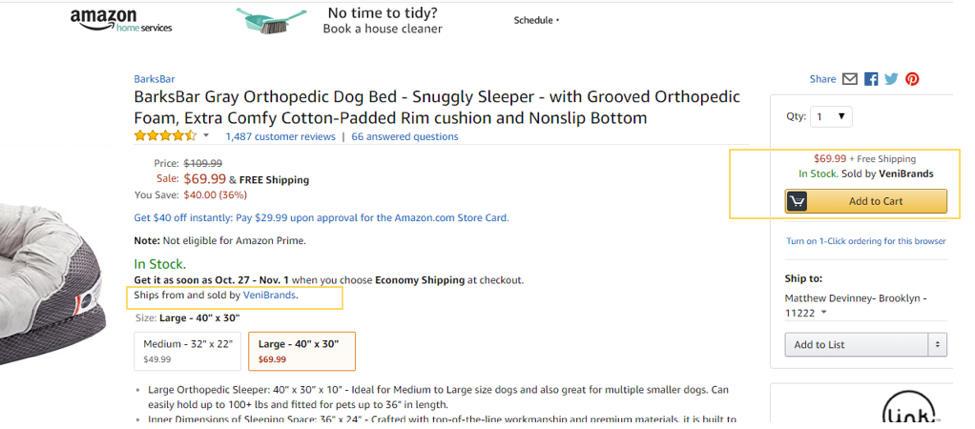
The Seller Fulfilled Prime (SFP) option is a hybrid option where it combines the advantages of FBA without the additional cost. You would manage your products and listings the same way you would with FBM but you’ll get access to Prime customers. However, you do need to qualify for SFP. You’ll need to go through a trial period that involves a minimum of 300 orders. During the trial period, you’ll need to satisfy all of Amazon’s requirements. This includes a cancellation rate of less than 1%, on-time shipment of at least 99%, and use Buy Shipping Services for a minimum of 95% of the orders.
AMS (Amazon Marketing Services) & AMG (Amazon Media Group) are the two marketing platforms within Amazon for 1P sellers. These marketing tactics act differently and have different objectives in mind. Utilizing all campaign types available will allow for the greatest coverage across Amazon and Amazon properties, and give advertisers more options on how to strategically market their products on Amazon.
AMS offers advertisers three campaign types: Sponsored Products, Headline Search Ads and Product Display Ads. These different campaign types appear across Amazon.com and appear within product search results.
AMG is the more robust display arm for marketing on Amazon. With AMG, advertisers can display ads on Amazon.com, Amazon-owned properties, and on Kindle & Fire tablets. For the time being, we will go through the different AMS campaign types and save AMG for another time.
The first campaign type, Sponsored Products, allows advertisers to target select keywords within Amazon’s result pages. This campaign type is the most familiar to PPC marketers because it shows a product ad that is relevant to the product searched. Advertisers select the exact product to use for a set of keywords, so the targeting can become very granular! The product ad shows within the organic results of whatever product is searched. This campaign typically has the highest ROI, given the nature of the ad format.
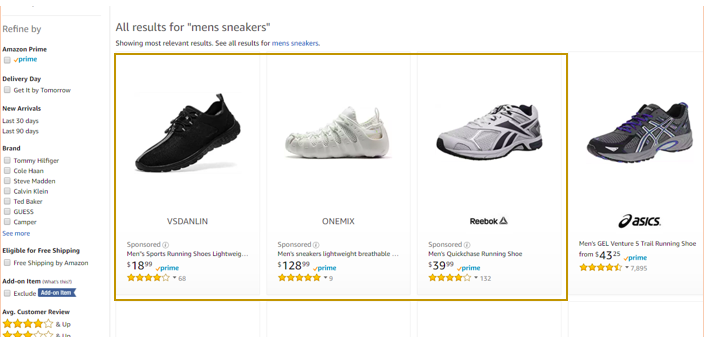
Headline Search is a bit different. You can still target by keywords, but ads are shown at the top of the results page in a banner format. The Headline Search ad format displays the brand’s logo alongside three specific products that advertisers can choose from within their catalogs. This ad format is great for brand awareness, and let’s advertisers have a strong foothold at the top of the results page. With this ad format, you can drive users to the products within the ad, or a custom store page for your brand.
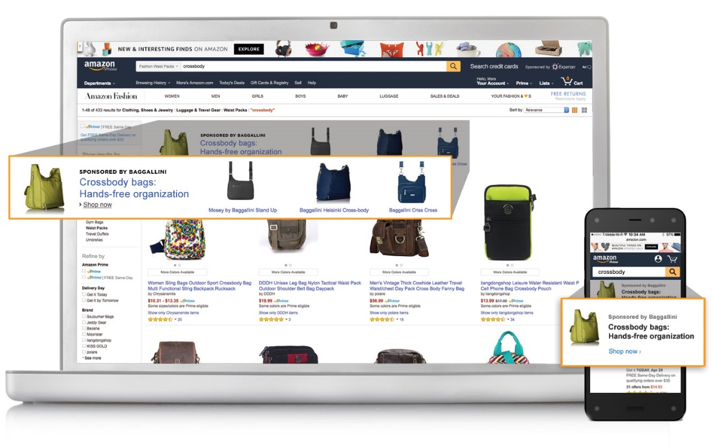
The final campaign type that is specific to AMS, is Product Display. This is more of a traditional display ad, allowing advertisers the option to target based on a specific product or interest category Amazon provides a list for. From there, advertisers can show an ad on the product details page of any particular product, to the right-hand side of the product details. Product Display ads feature the Brand Logo, a headline and product description including price, along with a picture of the product being advertised. This is a great way to cross sell popular products right when a user is on the product page of a different product you offer. On the other hand, if you want to show ad on a competitor product, this is the best way to do that.
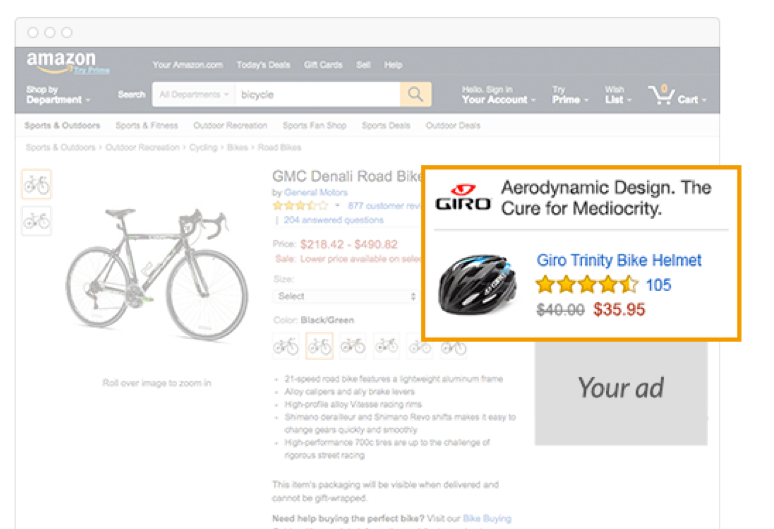
With all of this in mind, there are plenty of things that potential sellers need to consider before jumping into Amazon. Is 1P or 3P the best for you? What about FBA or FBM? Determining the best seller option and listing option comes down to what type of resources you have as a brand, and what makes the most sense to effectively sell your product offering. Couple this with the different marketing aspects you can utilize, it is clear Amazon can effectively take your brand to the next level as one of the major players in eCommerce.
Thank you to Joseph Minz for helping with this post
